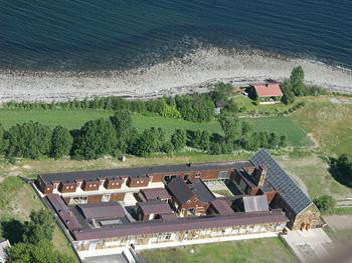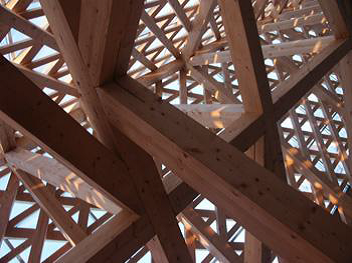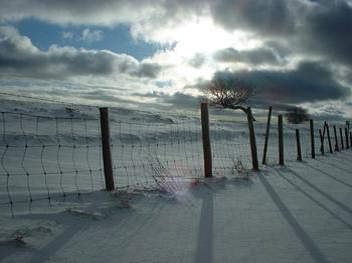Northern Light
It’s the water. The large windows which flank our sanctuary at Tautra Mariakloster look directly out on the Trondheim Fjord. Each of the seven of us Cistercian nuns here has felt our primordial connection with the water all around us. Being in our church is like being in a womb, with the waters of life nourishing us.

Water, of course, is a reminder of baptism. The Trondheim fjord in our backyard has a strong and dangerous current. When the first Christians in Norway were baptized by immersion, they probably felt in a profound way the danger of drowning. Pope John Paul challenged religious, at the turn of the millennium, to dare to put out into deep water. There, when the sea is rough, we are reminded of our fragility and how dependent we are on God’s mercy and grace for every breath of life. Being in our church is also like being on a ship, an ancient symbol of the church, launching out on the waters of the world. The ark of the covenant, bearing those who are saved from the flood. Our choir stalls utilize the beautiful curve of the prow of a Viking ship. After seven years in a makeshift chapel, it is a relief for us to be in a monastic choir; but I recently recalled a quotation I liked as a teenager: "A ship in a harbour is safe, but that is not what a ship is built for." As contemplative nuns, we are amazed at the amount of interest shown in our new monastery. Over seven thousand people came through the monastery when we held open house last September, and there is a steady stream of cars over the weekends, and busloads of tourists who come to midday prayer during the week. St Benedict calls us both to enclosure and to hospitality. It may be that our monastic choir allows us to anchor ourselves in Cistercian life, to enable us to launch into the depths of Love by reaching out to those who come here seeking a reality much greater than ourselves.

It’s the light. In midsummer we have about 20 hours of daylight. The glass roof of the church
creates ever-changing triangular patterns which move across the sanctuary, choir walls, guest pews and floor. It is God at play; the one who sends forth the light, and it goes, who calls it, and it obeys him, trembling (Bar 3:33). In the space of one 8-verse stanza of Psalm 119, geometric spotlights move across our bodies and choir books, reminding us of the God who is ever constant, yet ever new. We have an hour of silent prayer each morning after Vigils. During the winter, it is very dark at this time. Our blue-black larvikite altar, four and a half tons of black granite and a symbol of Christ the Rock, disappears in the darkness. It is as if one prays through Christ into God’s creation outside, because the glass disappears too. How like Jesus, who is always present, yet often invisible to our eyes. The stars seem closer in the black velvet of the long winter. Yet they too continue to shine in their watches; God calls them and they say, "Here we are!" And they shine with gladness for him who made them (Bar 3:34). One late summer afternoon I was struck by the light sparkling through the glass roof and on the beams. It was like being underwater and looking up through the density to see light dancing on the surface. In a sense we are always under water, and when we die it will be like breaking the surface and coming up into a new reality where we can breathe freely for the first time. The light draws us upwards, towards the freedom which is our true home.

It’s the space. The monastery is alive. The laminated wood beams breathe; the changes in temperature cause them to creak and crack. It would be a disturbance to prayer, except for the reminder that whatever grows, must change. My breath is consumed in the greater space, and becomes one with the sighs of the building, and the groans of the Spirit. In the summer, seagulls squabble with each other, and make a horrendous racket whenever the sea eagle flies low over the shoreline, threatening to enjoy a smorgasbord of eggs and fledglings. Only a glass wall separates us, which reminds us that it’s a battle out there, and our spiritual lives are probably no less a war zone. In the winter, the space has fewer human and animal sounds. But one hears the rain on the roof, the snow avalanching into the gardens, the wind howling and making the reflection of candlelight on the glass reverberate. It is good to be inside, to huddle into one’s cowl, and settle into prayer enveloped in soft darkness. It is good to be with Jesus in the clarity of the brightness of new life and fruitfulness; it is equally good to be with Jesus in the obscurity of the off-season, to slow down and consolidate one’s interior life-forces, to await a new birth in the eternal cycle of death and resurrection. It is good for us to be here.
By Sheryl Frances Chen America magazine, April 14, 2008